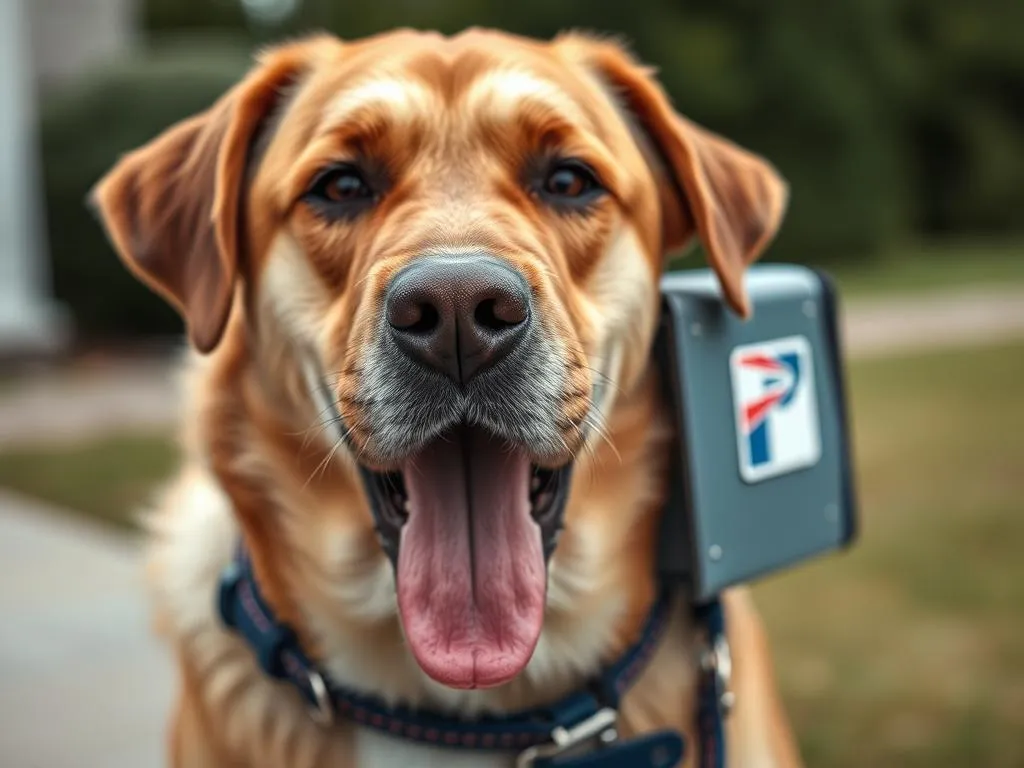
Dogs have a reputation for being man’s best friend, yet many dog owners have experienced an unexpected quirk in their canine companions: their intense dislike for the mailman. This behavior can leave many pet owners puzzled. Understanding why dogs hate the mailman is crucial for fostering a harmonious relationship between dogs, their owners, and the world outside their home.
Understanding Canine Behavior
Basic Instincts of Dogs
To grasp why dogs react negatively toward mail carriers, it’s essential to delve into their instincts. Dogs descended from wolves, and even after thousands of years of domestication, many of their instinctual behaviors remain intact. One of the primary instincts that shapes canine behavior is territoriality.
Dogs naturally perceive their home as their territory, and any unfamiliar presence can trigger protective instincts. When the mailman approaches the front door, the dog may see them as an intruder, leading to barking or aggressive behavior. This instinctual drive to protect their territory is rooted in their ancestral survival strategies, making it a fundamental aspect of canine behavior.
Socialization and Environment
Another critical factor in understanding why dogs may dislike the mailman is their socialization during puppyhood. Early socialization is vital for puppies to learn how to interact with various people, sounds, and situations. Dogs that haven’t been adequately socialized may develop anxiety or fear toward unfamiliar individuals, including mail carriers.
A dog’s environment also plays a significant role in shaping its perception of people. If a dog has had negative encounters with strangers or loud noises, they may associate these experiences with anyone who approaches their home, including the mailman. This environmental conditioning can lead to a heightened fear response, resulting in barking or aggressive behavior.
Common Reasons Dogs Dislike Mailmen
Territorial Aggression
One of the most prevalent reasons dogs react negatively to mailmen is territorial aggression. Dogs are instinctively protective of their homes and families. When the mailman arrives, the dog may perceive them as a threat to their territory.
This reaction stems from the dog’s desire to defend its space. As the mailman approaches the front door, dogs may bark, growl, or even rush to the door to confront the perceived intruder. This behavior is not inherently malicious; it’s simply a reflection of the dog’s instinct to protect its territory.
Fear and Anxiety
Fear and anxiety can also explain why some dogs harbor a strong dislike for mail carriers. Certain dogs may see the mailman as a threat due to their unfamiliar appearance, uniform, or the loud noises associated with mail delivery.
For dogs that have had negative experiences, such as loud sounds or sudden movements, the arrival of the mailman can trigger a fear-based reaction. This response is often characterized by excessive barking, hiding, or even aggressive behavior directed toward the mail carrier.
Sound and Movement Triggers
The sounds and movements associated with mail delivery can significantly impact a dog’s behavior. Dogs are naturally sensitive to noise, and the rustling of letters, the sound of the mail truck, or the footsteps of the mailman can trigger instinctive responses.
Additionally, sudden movements can startle dogs, leading them to react defensively. The combination of these auditory and visual stimuli can create a perfect storm of anxiety and aggression, further solidifying the dog’s negative perception of the mailman.
The Role of Conditioning
Classical Conditioning
A dog’s negative reaction to the mailman can often be traced back to classical conditioning. This psychological principle explains how dogs can associate specific stimuli with negative experiences. For example, if a dog barks at the mailman and is subsequently reprimanded or scolded by their owner, the dog may start associating the mailman with negative consequences.
Over time, this conditioning can lead to a cycle where the dog anticipates the arrival of the mailman with fear or aggression. Each delivery reinforces this negative association, making it increasingly difficult to change the dog’s behavior.
Reinforcement of Behavior
The behavior of pet owners can inadvertently reinforce a dog’s dislike for the mailman. When a dog barks or growls, many owners may react by yelling or trying to calm their dog down, which can unintentionally reinforce the aggressive behavior.
This cycle can create confusion for the dog, who learns that barking leads to attention from their owner, even if it’s negative attention. As a result, the dog may become more entrenched in its behavior, leading to an ongoing pattern of aggression or anxiety whenever the mailman arrives.
Understanding Individual Dog Differences
Breed-Specific Behaviors
Not all dogs react to mailmen in the same way, and breed-specific traits can play a significant role in this behavior. Some breeds are naturally more territorial or protective, making them more prone to aggression toward strangers, including mail carriers.
For instance, breeds like German Shepherds, Rottweilers, and Doberman Pinschers are often more likely to exhibit territorial aggression due to their guarding instincts. In contrast, breeds known for their friendly and social nature, like Golden Retrievers or Labrador Retrievers, may be less likely to show aggression toward the mailman.
Individual Temperament
Beyond breed traits, individual temperament also affects how dogs react to unfamiliar people. Just as humans have distinct personalities, so do dogs. Some dogs may be more confident and sociable, while others may be shy or fearful.
A dog’s past experiences can also shape their responses. For example, if a dog has been mistreated by a stranger, they may develop a generalized fear of all unfamiliar individuals, including mail carriers. Understanding these individual differences is crucial for addressing and modifying behavior effectively.
Solutions to Mitigate Aggression
Training Techniques
Addressing a dog’s dislike for the mailman requires a combination of understanding and training. One effective approach is utilizing training techniques such as desensitization and counter-conditioning.
Desensitization involves gradually exposing the dog to the stimulus that triggers their fear—in this case, the mailman—while remaining at a distance where the dog feels safe. Over time, the dog can be brought closer to the mailman, allowing them to become accustomed to their presence without feeling threatened.
Counter-conditioning focuses on changing the dog’s emotional response to the mailman. This can be achieved by rewarding the dog with treats or praise when they remain calm during the mail delivery process. Positive reinforcement helps create a more favorable association with the mailman.
Creating a Safe Space
Another effective strategy is to create a safe space for the dog during mail delivery. This can involve establishing a designated area, such as a separate room or a crate, where the dog can feel secure and relaxed.
Using barriers such as gates can also help reduce the dog’s anxiety during deliveries. By limiting their exposure to the mailman, dogs may feel less threatened, allowing them to process the situation more calmly.
Professional Help
In some cases, seeking professional help from a dog trainer or behaviorist may be necessary. Professional trainers can provide tailored strategies and support to address the specific behaviors exhibited by the dog.
Engaging with a trainer can also help owners understand how to reinforce positive behaviors and mitigate negative ones effectively. A well-structured training program can make a significant difference in a dog’s behavior and overall well-being.
Conclusion
Understanding why dogs hate the mailman encompasses a range of behavioral, social, and environmental factors. By recognizing the instincts that drive territorial behavior, the importance of early socialization, and the role of conditioning, dog owners can take proactive steps to address their pet’s reactions.
With the right training techniques, a safe environment, and potentially professional guidance, it’s possible to help dogs develop a more positive association with the mailman. Patience and knowledge are essential in this journey, allowing both dogs and their owners to enjoy a harmonious coexistence with the world outside their home.









